Indonesia is the country with the most volcanoes in the world and the world's oddest terrain.
Indonesia has the strangest geography on the planet | The country with the greatest number of volcanoes in the world
Hello there, friends. Indonesia is the world's largest island country, located in Southeast Asia at the confluence of the Indian and Pacific oceans. With approximately 17,508 large and small islands, it is known as the country of ten thousand islands. However, it is made up of five major islands: Sumatra, Java, Borneo, Sulawesi, and New Guinea. Indonesia has a total area of approximately 1,905,000 square kilometers, which is roughly equivalent to Mexico.
Indonesia has a population of about 274 million people, ranking fourth in the world and 2.8 times larger than Vietnam. In which 80% of the population lives on the Indonesian islands of Java and Sumatra. Approximately 78% of the population is Muslim. The country of Indonesia is divided into 34 provinces. There are five provinces with special administrative status. First, Aceh is the only province in Sumatra's northernmost island where Islamic law is fully enforced.
They take a stand for independence, seceding from Indonesia as an autonomous region. Second, the Yogyakarta Special Region, Indonesia's only province led by both an emir and a governor, is a hereditary monarchy. Papua and West Papua are the next two provinces. This region bears the least resemblance to the rest of Indonesia.
Its history and culture are very similar to that of Papua New Guinea. When Indonesia declared independence from the Dutch Empire in 1945, it reclaimed it. The region has a high degree of independence. Finally, there is Jakarta, Indonesia's largest city, which is located on the northwest coast of Java Island and houses the entire government apparatus and state agencies.
The capital will be relocated to Kalimantan province on the island of Borneo the next time, according to the plan. The majority of Indonesia is made up of plains near the coast. It is generally favorable for agricultural development, road construction, and building. The majority of the large islands, however, have massive mountain ranges.
There are over 400 volcanoes among them, more than any other country on the planet. There are over 150 active volcanoes in the area. Every day, the country is hit by four earthquakes. The most recent was in 1815, when Mount Tambora erupted, killing approximately 10,000 people immediately and more than 70,000 people later as a result of climate change.
It is the most powerful volcanic eruption in recent history. In 2018, an earthquake and tsunami in Palu killed 4,340 people and destroyed extensive property. Because Indonesia is located in the Pacific Ring of Fire, where many tectonic plates split and collide, it is the most affected country.
However, difficulties create opportunities. Volcanic activity, combined with a hot and humid climate, has resulted in Indonesia having the most fertile land on the planet. As a result, agriculture is one of Indonesia's three key industries, accounting for 12.7% of GDP in the previous year. Industry accounts for 38.95% of the remaining sectors, while service accounts for 44.23%.
-
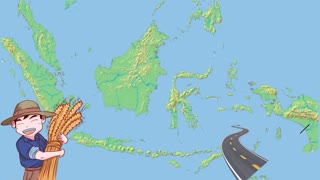 6:02
6:02
KANAL AND NEWS
1 year agoIndonesia is the country with the most volcanoes in the world and the strangest geography
3 -
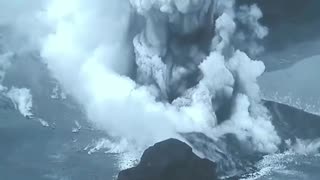 1:03
1:03
Question Everything
6 months agoIndonesia's Anak Krakatau volcano and a volcano on Japan's Iwo Jima island erupt.
136 -
 30:30
30:30
The Memory Hole
1 year agoCIA Archives: The Face of Southeast Asia (1964)
1.33K1 -
 0:44
0:44
KnowlHaus
4 months agoIndonesia
17 -
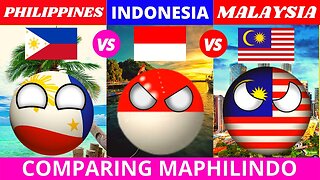 6:22
6:22
Travel In Less Than 20 Minutes
1 year ago2021 Country Comparison: Indonesia VS The Philippines VS Malaysia
28 -
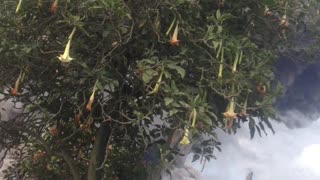 0:42
0:42
ViralHog
6 years ago $0.05 earnedVolcano Eruption in Indonesia
115 -
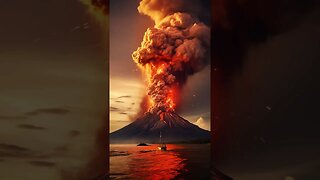 1:00
1:00
History and Facts
11 months agoMost Devastating Volcanic Eruption in History | Krakatoa #shorts
13 -
 0:42
0:42
Hendryana
1 year agothe beauty of one of the highest mountains in the country of Indonesia
15 -
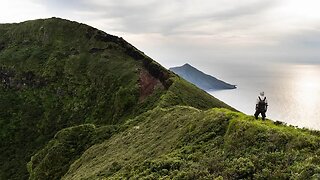 19:41
19:41
Steve Ronin
4 years agoExploring Tokyo's Forgotten Volcano Island You Won't Believe What I Found Deep Inside The Crater
44 -
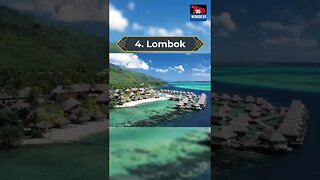 0:57
0:57
MrFacts23
1 year ago10 Best Places to Visit in Indonesia | #shorts
1